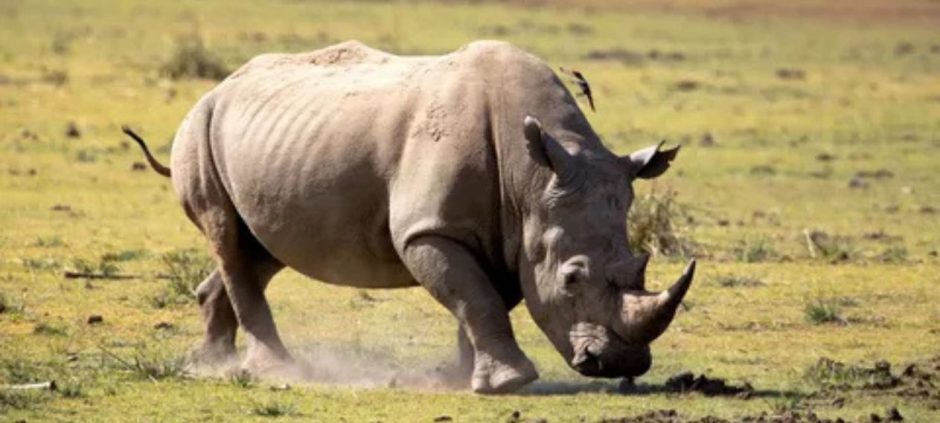What if I told you there’s an animal so huge it looks like a walking tank, yet it loves mud baths, hates surprises, and sometimes runs like it’s late for a meeting?
Yes, we’re talking about the Rhinoceros, one of the most dramatic yet misunderstood giants on Earth. This blog takes you into the secret life of the Rhinoceros, where you can spot them in Pakistan, and why their survival connects directly to our planet’s health.
Rhinoceros 101: Surprising Things You No One Knows
Before we jump into tourism spots and conservation talk, let’s get to know our horned heavyweight a little better.
Rhinos have been around for millions of years, have thick skin that feels like cracked armor, and communicate through little chirps, squeaks, and snorts that sound nothing like their size. Ready for more? Let’s go!
Here’s what makes the Rhinoceros truly unforgettable:
- They’re massive but fast. A rhino can weigh more than 3,000 kg, yet still sprint at 50 km/h. Imagine something bigger than your car overtaking you on foot.
- Thick skin, soft heart. Their skin is 2–5 cm thick, but they enjoy gentle grooming from birds that sit on them and eat parasites.
- Not-so-great eyesight. Rhinos can barely see a few meters ahead. So if they seem grumpy, blame the vision, not the attitude.
- Excellent smell and hearing. Their ears swivel like mini radars, picking up the tiniest sounds.
- Herbivore royalty. They only eat grass, leaves, and shoots, but a lot of it.
- Five unique species. White, Black, Indian, Javan, and Sumatran Rhinos, each with its own look and personality.
- They love routine. Rhinos enjoy predictable days: eat, walk, nap, mud bath, eat again.
Their lives are simple, yet full of charming little habits, the kind that make you appreciate how gentle wildlife giants can be.
Best Places In Pakistan To Meet These Giants
Before you plan a safari abroad, here’s some good news: you can see a Rhinoceros right here in Pakistan.
Some Pakistani zoos rotate animals or bring them temporarily, so always check updates before visiting. Now, let’s explore your best options.
Here are the top places where you might spot a Rhinoceros in Pakistan:
Lahore Zoo
One of the country’s oldest and most popular zoos. Their large mammal section often features rare wildlife, including rhinos when available.
Karachi Zoo
Home to several big mammals. If you’re in Karachi, this is your closest chance of spotting a Rhinoceros.
Safari Parks (Punjab & Sindh)
These larger enclosures give animals more roaming space, making your wildlife experience feel more natural.
If you’re planning your weekend outing, here are some quick, smart tips:
- Check the zoo’s social media pages for updated animal lists.
- Visit early morning or late afternoon, rhinos become more active in cooler hours.
- Ask for guided tours. Many zoos now offer quick informational sessions that make your visit 10x more interesting.
- Capture the moment. Their skin texture alone looks incredible in photographs.
- Respect their space. No tapping on glass, yelling, or throwing food, calm observation always leads to the best experience.
And if you enjoy following wildlife stories in Pakistan, you’ll love reading about how four rare whale species were recently spotted along our coastline, a moment that excited every wildlife lover in the country.
Why Rhinoceros Conservation Matters
Let’s zoom out for a moment, because the survival of the Rhinoceros isn’t just a global issue. It’s linked to us, too.
Rhinos may not roam freely in Pakistan anymore, but what happens to them shapes the bigger picture of wildlife and environment worldwide.
Here’s why Rhinoceros conservation actually matters for Pakistan:
They’re Ecosystem Engineers
Rhinos help maintain grasslands by grazing. These healthy grasslands support birds, deer, insects, and dozens of plant species, creating a full circle of life.
They Strengthen Biodiversity
Protecting rhinos automatically protects many other species that share their habitat. This is known as the “umbrella effect.”
They Boost Global Conservation Leadership
When countries actively support rhino protection, it signals environmental responsibility, something Pakistan increasingly aims for.
They Inspire Eco-Tourism
Places with healthy wildlife attract international eco-tourists, bringing jobs and revenue that benefit communities.
They Remind Us of Environmental Responsibility
The survival of large animals often reflects the overall health of ecosystems. If rhinos suffer, nature as a whole suffers.
And with climate change affecting Pakistan heavily, wildlife conservation isn’t a luxury anymore, it’s a necessity.
Before You Go
The Rhinoceros may not live wild in Pakistan today, but its story teaches us about resilience, balance, and the beauty of nature’s giants. From fun facts to zoo visits to global conservation, this incredible animal shows why wildlife matters, no matter where we live.
If this blog made you curious about more wildlife adventures, stay tuned, share it with a friend, or drop a comment telling us which animal you want explored next. Pakistan is full of hidden wildlife stories, and we’re just getting started.











